A scleral marker is an indispensable tool in ophthalmology, enabling precise globe indentation and accurate sclerotomy site marking. Understanding the various tip configurations and marker types helps clinicians select the right instrument for diagnostic indirect ophthalmoscopy, intravitreal injections, and vitreoretinal surgery. This guide breaks down the most common scleral marker types—depressors, Gass tips, trephine points, and dual‑ended models—highlighting their design features, clinical applications, and selection criteria.
Depressor Tips
Depressor‑style scleral markers feature a broad, atraumatic end designed to indent the sclera under indirect illumination.
Shape: Teardrop, paddle, or bar-shaped for uniform pressure distribution.
Function: Facilitates peripheral retinal visualization by creating controlled indentation.
Use Cases: Peripheral lesion examination, assessment of retinal tears, and scleral depression during office-based indirect ophthalmoscopy.
Gass Marker Tips
Gass tips are finely pointed ends named after their inventor, ideal for marking precise entry points.
Diameter: Commonly 1.5 mm or 2.0 mm for delineating pars plana sclerotomy sites.
Design: Tapered cone or needle‑like profile to create a shallow, visible mark without tearing the sclera.
Use Cases: Guiding trocar placement, intravitreal injection entry, and gas or fluid exchange procedures.
Trephine Tips
Trephine tip markers combine marking and cutting capabilities in a single end.
Configuration: Circular or scalloped edge, available in diameters from 3 mm to 5 mm.
Function: Pre‑marks and scores the sclera for self‑sealing sclerotomies.
Use Cases: Micro-incisional vitreoretinal surgery, precise wound sizing, and consistent trocar insertion points.
Double‑Ended Models
Double‑ended scleral markers integrate two tip types on a single handle to minimize instrument exchanges.
Common Pairings: Depressor + Gass tip, depressor + trephine, or Gass tip + trephine.
Advantages: Streamlines workflow, reduces procedural time, and maintains a sterile field by eliminating repeated tray access.
Handle Design: Flat or square cross-section with serrations or ribbing for enhanced grip and torque control.
Tip Sizes & Materials
Scleral markers come in a range of tip dimensions and materials to match specific procedural needs.
Tip Sizes: Depressor widths from 3 mm to 6 mm; marker tips from 1 mm to 4 mm.
Materials: Surgical‑grade stainless steel for rigidity and corrosion resistance; some models use titanium alloys for lightweight durability.
Finish: Polished surfaces facilitate cleaning and sterilization; matte finishes can reduce glare under operating lights.
Key Considerations When Choosing a Scleral Marker
Clinical Application: Match tip type to procedure—depressors for exams, Gass tips for injection guidance, trephine tips for sclerotomy scoring.
Ergonomics: Select handle shape and length (typically 120 mm–135 mm) that fit surgeon hand size and offer optimal reach.
Reusability: Decide between single‑use, pre‑sterilized markers for turnover convenience or reusable instruments that withstand validated sterilization protocols.
Sterility Workflow: Ensure compatibility with existing cleaning and autoclaving processes; reusable markers require inspection for tip integrity after each cycle.
Environmental Impact: Balance the waste generated by disposables against the resource consumption of reusable systems.
Conclusion
Selecting the appropriate scleral marker type hinges on understanding depressor, Gass, and trephine tip functions, as well as ergonomic and sterilization requirements. Double‑ended models can enhance procedural efficiency by combining complementary tip configurations, while material choice influences durability and maintenance. By aligning tip design with clinical objectives and workflow capacity, ophthalmic teams can optimize patient outcomes and streamline surgical protocols.


 Français
Français Español
Español Products
Products

 About Us
About Us












